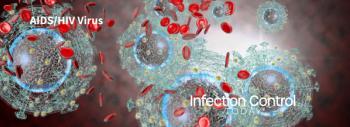
- Infection Control Today, July/August 2024 (Vol 28 No.4)
- Volume 28
- Issue 4
Enhancing Infection Control for Emergency Responders: Year 1 Progress of the ICER Collaborative

The ICER Collaborative addresses IPC gaps for EMS and firefighters, enhancing infection control through tailored training, advisory boards, and interagency collaboration based on year-1 findings as presented at APIC24.
The COVID-19 pandemic highlighted the essential role of prehospital care personnel, including emergency medical services (EMS) and firefighters (FFs). Traditionally, these responders have not been classified as healthcare workers, and existing infection prevention and control (IPC) training materials, such as those from the CDC’s Project First Line (PFL), may require adaptation to address their unique exposure risks and infectious disease challenges.
To address these needs, the CDC funded the establishment of the Infection Control for Emergency Responders (ICER) Collaborative and Training Hub. A multidisciplinary team was formed to conduct a needs assessment among EMS personnel and FFs to develop a multi-modal IPC training approach tailored for the prehospital setting.
Christine M. McGuire-Wolfe, PhD, CIC, CPH, an assistant professor at the University of South Florida, College of Public Health, and the director of the ICER Collaborative and Training Hub, presented this information in a poster titled “Creation of an Infection Control for Emergency Responders (ICER) Collaborative and Training Hub: Challenges, Needs, and Progress in Year 1” at the APIC 2024 Annual Conference and Exposition (APIC24) in San Antonio, Texas, held from June 3 to 5, 2024.
McGuire-Wolfe, who also teaches within infection control programs in the Global and Planetary Health Strategic Area and directs the Undergraduate Infection Control Minor, outlined the first year’s activities and findings. The team conducted interviews and focus groups with field personnel and agency representatives to identify existing IPC resources, training needs, perceptions of current training materials, willingness to engage, and trusted sources of IPC information. Comprehensive literature reviews were also undertaken, focusing on ambulance contamination, existing infection control and prevention training methods, and factors influencing the credibility of health information sources.
Key themes that emerged from these activities included:
- A significant lack of existing IPC resources tailored for EMS and FFs.
- The need for preestablished relationships between agencies involved in pandemic response.
- A strong willingness among responders to participate in the ICER initiative.
- An opportunity for ICER to become a central hub for IPC materials, policy reviews, and networking among emergency responders.
The assessment revealed several critical needs and opportunities. Firstly, there was a clear gap in existing IPC resources specific to EMS and FFs. Responders expressed a willingness to engage with the ICER initiative, recognizing the necessity for specialized training materials and guidelines. The study also highlighted the importance of establishing strong interagency relationships before a pandemic occurs to ensure a coordinated response.
Key findings from the literature reviews supported these observations, showing significant gaps in training related to ambulance contamination and the need for trusted, credible sources of health information. These insights are instrumental in guiding the development of targeted IPC training for emergency responders.
Based on the input from field and agency representatives, the next steps for ICER include:
- Revising and clarifying existing PFL materials to make them relevant to the prehospital context.
- Establishing an advisory board comprising EMS and FF representatives to guide the development of training materials.
- Creating additional IPC training resources utilizing problem-based learning, simulation, and feedback mechanisms.
- Ensuring that training materials are tailored to each site and agency's specific needs and conditions.
McGuire-Wolfe also discussed the future direction for ICER development. Moving forward, ICER will focus on developing and refining IPC training materials, establishing a robust advisory board, and fostering interagency collaboration to ensure a comprehensive and effective approach to infection control among EMS and FFs.
Establishing the ICER Collaborative and Training Hub represents a significant step towards enhancing the IPC capabilities of EMS personnel and firefighters. By addressing the unique challenges these frontline responders face, ICER aims to improve infection control practices, thereby safeguarding the health of both emergency responders and the communities they serve. The progress made in the first year lays a strong foundation for future developments, ensuring that EMS and FFs are well-equipped to handle infectious disease threats effectively.
Articles in this issue
over 1 year ago
Dining Recommendations for Long-Term Care Facilitiesover 1 year ago
Bug of the Month: I Like Animals and a Few Peopleover 1 year ago
Infection Prevention Implication for Organ Donation Programover 1 year ago
APIC Launches PolicyPro for Infection Control and Preventionover 1 year ago
Standardizing Cleaning Protocols Across the Care ContinuumNewsletter
Stay prepared and protected with Infection Control Today's newsletter, delivering essential updates, best practices, and expert insights for infection preventionists.






